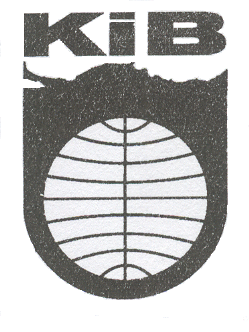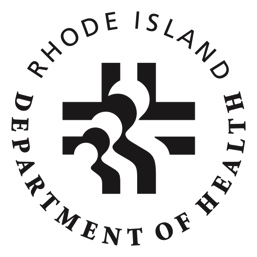10144 CHAPTER 266 PAGE 4 10 DEPARTMENT OF HUMAN
10144 CH 293 PAGE 9 10144 CHAPTER 293 STATE10144 CHAPTER 1 PAGE III 10144 DEPARTMENT OF HEALTH
10144 CHAPTER 110 REGULATIONS GOVERNING THE LICENSING AND FUNCTIONING
10144 CHAPTER 112 RULES FOR THE LICENSING OF GENERAL
10144 CHAPTER 118 STATE OF MAINE REGULATIONS GOVERNING
10144 CHAPTER 126 PAGE 3 10144 DEPARTMENT OF HUMAN
DEPARTMENT OF HUMAN SERVICES
10-144
Chapter 266 page
10 DEPARTMENT OF HUMAN SERVICES
BUREAU OF HEALTH, PUBLIC HEALTH DEPARTMENT
Chapter 266 CERTIFICATION STANDARDS FOR PERSONS CONDUCTING CHEMICAL ANALYSES FOR THE DETECTION AND IDENTIFICATION OF DRUGS
SUMMARY: These rules set forth the technical qualifications necessary for an individual to be certified by the Department of Human Services to detect and identify drugs. Included in the rules are criteria pertaining to necessary laboratory facilities and equipment, reference standards, record keeping, security and proficiency testing.
1. APPLICATION FOR CERTIFICATION:
Application for certification as an analyst must be initiated by qualified personnel meeting the technical qualification requirements of these rules and regulations.
2. TECHNICAL QUALIFICATIONS FOR LABORATORY ANALYST:
A. Successful completion in an accredited college or university of a course of study which meets all academic requirements for a bachelor’s degree in one of the chemical, physical, biological or pharmaceutical sciences and at least 24 semester hours in chemistry which shall include at least 8 semester hours of analytical chemistry. In addition, the analyst must have had experience in drug identification or have successfully completed special training approved by the department.
B. For those individuals who do not qualify under (A) but have been testing drugs for identification and have been qualified to testify as an expert witness in superior court at least 1 year prior to May 1, 1976, an exception shall be made in the qualifications listed above, provided they have successfully completed a course of study in an accredited college or university which meets all academic requirements for a bachelor’s degree, and have at least 24 semester hours in chemistry, biology or physics courses of which not less than 16 hours must have been in chemistry.
3. EVALUATION OF THE LABORATORY AND PERSONNEL:
A. No person shall be certified unless his work is done in a well organized laboratory which has been inspected and approved by the Department of Human Services. Said Laboratory shall have adequate space, facilities and equipment necessary to assure that competent, professional service is performed. Such equipment shall be maintained in good working order, routinely checked and properly calibrated. Adequacy of equipment and proper maintenance thereof may be checked as deemed necessary by visits by the certifying authority or agent appointed by him.
B. Laboratories shall possess a Controlled Substance Registration Certificate as issued by the Drug Enforcement Administration, U.S. Department of Justice.
C. For each drug which will be identified, a laboratory shall stock a reference standard sample, if commercially available; reference standards may be prepared by synthesis or by extraction and purification of a drug in dosage form, and checking identity by comparison of its infrared absorption spectrum, mass spectra, or x-ray diffraction pattern with those published in the appropriate scientific literature which shall include but not be limited to:
1. Association of Official Analytical Chemists “Infrared and Ultraviolet Spectra of Some Compounds of Pharmaceutical Interest”
2. Bureau of Narcotics, United States Dept. of Justice, “Analytical Manual, Analysis of Drugs”
3. E.G.C. Clarke, “Isolation and Identification of Drugs”, the Pharmaceutical Press, London
4. Sunshine and Gerber, “Spectrophotometric Analysis of Drugs”, Thomas
5. Sadtler Standard Spectra, Philadelphia
6. Journal of Forensic Sciences
7. Microgram
8. The Journals of the American Chemical Society
D. Certification shall also require satisfactory performance on proficiency testing.
In proficiency testing results returned shall include complete data of all tests used to establish proof of identity, such as Rf of controls and samples if TLC is used, retention times in gas chromatography, mass spectra, ultraviolet, infrared or fluorescence spectrophotometer curves if applicable, or such other scientific information as may be required for the identification of the particular scheduled drug involved.
Failure to perform satisfactorily on proficiency test samples shall result in denial or revocation of certification.
If certification is denied because of incorrectly identifying a particular drug, applicant may reapply after 6 months. If denied or revoked because a drug is not identified or because proof of identity is deemed insufficient, applicant may reapply immediately.
E. Proficiency testing shall be made annually.
4. MAINTAINING RECORDS AND REPORTING FOR STATISTICAL PURPOSES:
Identification of scheduled drug in samples submitted for analysis shall be supported by details of physical and chemical characteristics determined by appropriate tests. Complete data of each test result shall be preserved for a period of at least two years after the date of submittal of the report and shall be available for inspection if required by the certifying agent. Records of laboratory reports shall be filed in a manner which permits ready accessibility and identification. A semiannual report shall be made to the Department of Human Services, listing totals of samples received and drugs identified on a form provided by the department.
5. ADDITIONAL REQUIREMENTS - CONTINUITY AND SECURITY:
Assurance of continuity is of prime importance in forensic work. Each certified analyst will accept and take possession of samples being submitted. If work is not undertaken immediately, sample shall be stored in an area to which the analyst alone has access. Like precautions shall be used to safeguard remaining evidence after test is completed. Records shall also be safeguarded in such a way that results are available only to agencies to which reports may be lawfully submitted.
6. CERTIFICATION FOR ANALYST ONLY:
Certification is granted only to the analyst who personally does the work and shall in no way provide for the analyst to make use of or himself certify the work of any other person.
7. FAILURE TO COMPLY WITH THESE STANDARDS:
Failure to comply with the standards set forth in these rules and regulations shall constitute grounds for refusing to certify any person as an analyst or for revoking the certification of any person as an analyst.
8. CERTIFICATION GOOD FOR FIVE YEARS:
Certificates will be granted to cover a period of five years, but may be sooner revoked for cause as specified. Application must be made for renewal.
STATUTORY AUTHORITY: 17-A M.R.S.A. §1112 (1) and 22 M.R.S.A. §42(1)
EFFECTIVE DATE: November 15, 1978
EFFECTIVE DATE (ELECTRONIC CONVERSION): May 5, 1996
10144 CHAPTER 202 PAGE IV 10144 CMR CHAPTER 202
10144 Chapter 205 Page 14 10144 Department of Health
10144 CHAPTER 209 PAGE 8 10144 DEPARTMENT OF HEALTH
Tags: 10144, department, human, chapter
- SEPA PRESENTA SU CONGRESO DE OVIEDO 2011 LA
- NA TEMELJU ČLANKA 28 ZAKONA O ENERGIJI (»NARODNE NOVINE«
- IN HET DAGELIJKS LEVEN MOOI OM TE WETEN
- TURKEY TRIVIA QUIZ TOP OF FORM WHEN WAS THE
- FORMULARIO RNPSP 005 DECLARACION JURADA EMPLEADOS (ARTÍCULO 6º LEY
- I DENNA RAPPORT OM REGNSKOGEN KOMMER DU ATT FÅ
- IEPIRKUMA “MĒBEĻU IEGĀDE PAGASTA IESTĀDĒM” IDENTIFIKĀCIJAS NR SPP 20179
- Difference in Conditions in the Fringes of leg 91
- “WE ARE WAGING A WAR WITH SIN MY BROTHERS
- SCOTTISH ENSEMBLE – JOB DESCRIPTION OPTION A – 3
- MBA 201A FALL 2009—PROF WOLFRAM DISCUSSION QUESTIONS PARKER HANNIFIN
- NE ATLANTIC PORBEAGLE SHARK SURVEY PROPOSAL QUESTIONS ABOUT
- RASEINIŲ KŪNO KULTŪROS IR SPORTO CENTRAS PATVIRTINTA EGIDIJUS ŠUBINAS
- FORM OF QUARTERLY RETURN II [RESERVE BANK OF INDIA
- LANGUAGE(S) INDEPENDENT SEARCH ENGINES HTTPWWWJOBSTAIRSDEWMSJOBSTAIRS2INDEXPHP?LANGUAGE2&CI9 D EN CHN HTTPWWWJOBSCANNERDEPROFISUCHEPHP
- TEACHER TOTAL PAGES FOR STUDENT THIS NINE WEEKS
- PROBLEM STATEMENT DEFINITIONPURPOSE A TOOL USED TO DESCRIBE THE
- NATIONAL INFORMATICS CENTRE EFILING USER MANUAL FOR REGISTERED ASSESSEE
- COMUNE DI URBINO PROVINCIA DI PESARO E URBINO DELIBERAZIONE
- ANSØGNING TIL STUDIENÆVNET FOR TVÆRKULTURELLE OG REGIONALE STUDIER
- DONACION MODAL EN LA CIUDAD DE MONTEVIDEO EL DÍA
- ASUNTO COMUNICANDO RESOLUCIÓN A LA CONVOCATORIA DEL XXVIII CONCURSO
- (ORDENADAS POR FECHA DE PUBLICACIÓN) DEPARTAMENTO DE SANIDAD BIENESTAR
- IADL INSTRUMENTELE ACTIVITEITEN IN HET DAGELIJKS LEVEN DIT
- INDICE TITULO PRELIMINAR EL COLEGIO OFICIAL DE ARQUITECTOS DE
- OBJECTIVES AT THE END OF THIS INTRODUCTORY COURSE THE
- JEDINSTVENI GRADSKI ORGAN UPRAVE GRADA BIHAĆA ZAHTJEV ZA PRIZNAVANJE
- 20142015 FAFSA VERIFICATION AVAILABILITY OF 2013 IRS INFORMATION FOR
- DARSTELLUNG DES PROMOSPROJEKTES GENERELLE HINWEISE DIESE DARSTELLUNG IST
- LEIDRAAD NO BLAME AANPAK (EEN INTERVENTIE METHODE OM PESTEN
 2020 YILI ADIYAMAN ÜNİVERSİTESİ SOSYAL BİLİMLER MESLEK YÜKSEKOKULU FAALİYET
2020 YILI ADIYAMAN ÜNİVERSİTESİ SOSYAL BİLİMLER MESLEK YÜKSEKOKULU FAALİYET PUBLIC SAFETY PORTFOLIO OPEN DATA STRATEGY 2014 15
PUBLIC SAFETY PORTFOLIO OPEN DATA STRATEGY 2014 15 KARADENİZ İHRACATÇI BİRLİKLERİ GENEL SEKRETERLİĞİ SAYI 35649853TİMKİBGSKARGE2019342003671 25092019
KARADENİZ İHRACATÇI BİRLİKLERİ GENEL SEKRETERLİĞİ SAYI 35649853TİMKİBGSKARGE2019342003671 25092019UVHVVR 6 SEPTEMBER 2017 OGLJE Z GLINO IZVEDBENA UREDBA
 R HODE ISLAND DEPARTMENT OF HEALTH CENTER FOR HEALTH
R HODE ISLAND DEPARTMENT OF HEALTH CENTER FOR HEALTHBEACH PATROL ROWER ROWER FINISH PLACEMENT TIME MBP
SEPTEMBER 6 2011 REGION V PUBLICATIONS AND COMMUNICATIONS COMMITTEE
FEDERAL COMMUNICATIONS COMMISSION DA 00865 BEFORE THE FEDERAL COMMUNICATIONS
U M O W A N A J M
 NATIONAL EVALUATION SERIES™ TEST PREPARATION WORKSHEET THIS WORKSHEET WILL
NATIONAL EVALUATION SERIES™ TEST PREPARATION WORKSHEET THIS WORKSHEET WILLFAIRNESS IN TEACHER’S WORK WITH EMPHASIS ON FAIRNESS IN
 LIGO RODA LIGOM0900034V4 DOCUMENT LIGO M0900034V4 DATE TITLE RODA
LIGO RODA LIGOM0900034V4 DOCUMENT LIGO M0900034V4 DATE TITLE RODAOBRAZAC OBAVIJESTI SUKLADNO ČLANKU 5 STAVAK 3 PRAVILNIKA O
17 PROTOKÓŁ NR XLIII05 SESJI RADY MIEJSKIEJ W DNIU
HENRIQUE DUQUE ESTRADA DE MACEDO SOARES NASCEU NA FAZENDA
V Z O R Y P R O V
THE UNTOUCHABLES AND THE PAX BRITANNICA [ THE MANUSCRIPT
SIMON LAIGHT BIOGRAPHY SIMON HAS BEEN ACTIVE
MPE SC100 STATION CONTROLLER SPECIFICATION THE CONTROLLER SHALL
MERLO SAN LUIS 7 DE SETIEMBRE DE 1992 ORDENANZA